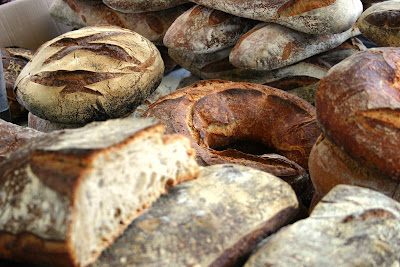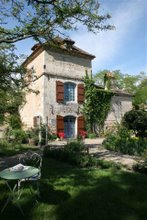That was the idea. Traditionally the Wednesday morning market in Agen has been the live poultry market. When I first arrived in the Lot-et-Garonne in 1987, there were rows of benches on which housecoat-wearing Frenchwomen and beret-sporting Gascons sat behind piles of feathered friends tied together at the ankles or next to cardboard boxes with beaks and tails sticking out. The Wednesday morning soundtrack was a low murmur of gossip and clucking.
Even in this Southwest France modern times have arrived and the buying of live poultry in an urban environment has slowly disappeared from Agen. There was but one truck of cages filled with bedraggled-looking chickens from a local 'semi-industrialized' farm. I had expected there to be a great show of fatted ducks at this time of year. What I found instead was a wonderful show of winter produce at bargain prices with a smattering of artisan poultry growers with their wares prepared for a more urban audience- fatted ducks already cut, cleaned and parceled out ready to confit.
Here are the January Market season specials:


SPANISH ORANGES & TARBAIS BEANS

CRUSTY BREAD & SWEET MUSCAT GRAPES

ROOTS AND SHOOTS

So here is the take from this smiling enterprising Artisan Duck vendor:
- One carcass called a 'demoiselle'
- One 'manteau' or cloak- that is the legs and breasts removed in one piece from the carcasse
- a big bag of fat and trimmings including the pure white inner fat from near the foie gras
- and four duck necks and heads- les cous









































